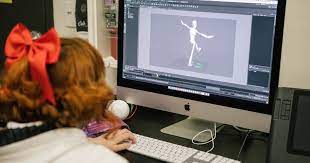What Is The Difference Between A Director And An Animation Director? Can Animator Become Film Director?
A director and an animation director are both important roles in the film and entertainment industry, but they have different responsibilities and areas of expertise. In this response, I will describe the key differences between these two roles within 2000 words.
Firstly, a director is responsible for overseeing the entire production of a film or TV show. They are in charge of the creative vision and direction of the project and work closely with the producers, screenwriters, cinematographers, and other crew members to bring the story to life. The director’s primary focus is on the story and the characters, and they use their skills in visual storytelling to create a compelling and engaging film or TV show.

The director is responsible for casting the actors, working with them to develop their characters and performances, and ensuring that all of the performances in the film are cohesive and true to the script. They also work with the cinematographer to plan the shots and camera movements for each scene, and they make decisions about lighting, color, and other visual elements that help to convey the mood and tone of the film.
In addition to their creative responsibilities, the director also has managerial duties. They are in charge of hiring and managing the crew members, overseeing the budget and schedule of the production, and making sure that everyone is working together effectively to achieve the desired outcome. The director also has final approval over all creative decisions and is ultimately responsible for the success or failure of the project.
On the other hand, an animation director is responsible for overseeing the animation process of a film or TV show. They work closely with the animators, storyboard artists, and other members of the animation team to bring the characters and settings to life. The animation director’s primary focus is on the technical aspects of animation and ensuring that the animation style and quality are consistent throughout the project.
The animation director also works closely with the director to ensure that the animated sequences are true to the director’s vision and fit seamlessly into the overall production. They help to plan the animation sequences, including the movement, timing, and camera angles, and they provide guidance and feedback to the animators to ensure that the final product is of high quality.
One of the key differences between a director and an animation director is the medium in which they work. While a director is primarily focused on live-action films or TV shows, an animation director works exclusively in animation. This means that they have a deep understanding of the unique challenges and techniques required to create compelling and realistic animated characters and environments.

Another important difference is the level of specialization required for each role. While a director has a broad range of responsibilities and must be knowledgeable about all aspects of the production process, an animation director has a narrower focus and must have a deep understanding of the animation process specifically.
In addition to their technical expertise, an animation director must also have strong leadership and communication skills. They must be able to work effectively with a large team of animators and other artists and be able to provide clear guidance and feedback to ensure that the animation is consistent with the director’s vision.
Finally, it’s worth noting that there are different types of animation directors, each with their own area of focus. For example, a character animation director is responsible for creating and animating the characters in a film or TV show, while a layout director is responsible for planning the camera movements and overall visual style of each scene.
In conclusion, a director and an animation director are both important roles in the film and entertainment industry, but they have different responsibilities and areas of expertise. While a director is responsible for the creative vision and direction of the entire production, an animation director is focused specifically on the technical aspects of the animation process.
Can Animator Become Film Director?
Yes, it is possible for an animator to become a film director, although it may require a significant shift in their career path and skill set. In this response, I will describe the steps an animator can take to become a film director, including the skills and experience they will need to acquire.
Firstly, it’s important to understand the key differences between being an animator and a film director. While both roles involve working in the film industry, they have different responsibilities and areas of expertise. An animator is responsible for bringing characters and settings to life through the use of animation techniques and software, whereas a film director is responsible for overseeing the entire production process, including casting, script development, cinematography, and editing.

To become a film director, an animator will need to acquire a range of additional skills and experience. Here are some steps an animator can take to become a film director:
- Develop a strong understanding of storytelling: Storytelling is a crucial element of both animation and film, but there are some important differences in how stories are told in these mediums. Animators should focus on developing their understanding of story structure, character development, and pacing, as these are all critical elements of successful films.
- Learn the craft of filmmaking: As a director, an animator will need to understand all aspects of the filmmaking process, including cinematography, lighting, sound, and editing. They will need to develop a strong understanding of how to use these tools to tell a compelling story and create an engaging film.
- Build a portfolio of work: To demonstrate their ability to direct a film, animators should create a portfolio of work that showcases their storytelling and filmmaking skills. This may include short films, music videos, or other creative projects that demonstrate their ability to create compelling visuals and tell a story through film.
- Build a network of contacts: Networking is an important part of any career in the film industry. Animators should attend industry events, film festivals, and other networking opportunities to meet other professionals in the industry and build relationships that may lead to future work opportunities.







